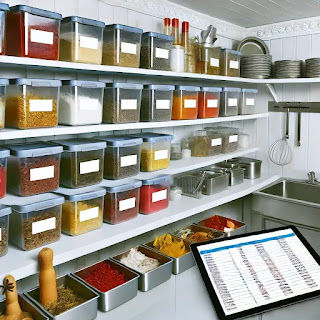Search This Blog
Dine to Success is your go-to resource for mastering the art of restaurant management. Whether you're a seasoned restaurant owner or just starting out, our blog provides actionable strategies and insights to help you boost efficiency, manage costs, motivate your team, and enhance customer experience.
Featured
- Get link
- X
- Other Apps
7 Employee Scheduling Hacks to Boost Your Restaurant's Efficiency
Scheduling is among the most important activities to consider when operating a restaurant business. It keeps the operation running smoothly if done well and has consequences in terms of staff satisfaction and, consequently, customer service. Below, we will discuss seven innovative ways to handle your restaurant's scheduling process, hence ensuring better efficiency and profitability.
Smarter Scheduling: The Impact
Proper employee scheduling makes or breaks any restaurant. It's directly related to all aspects of the business, from morale in your staff to the quality of service given to your customers and, more importantly, your bottom line. Done properly, it leads to:
Reduced labor costs
Improved employee satisfaction
Enhanced customer experience
Increased Operational Efficiency
7 Restaurant Employee Scheduling Hacks
- Leverage Technology
Paper schedules and Excel spreadsheets are a thing of the past. Restaurant scheduling software designed for today will speed up the process. Many include features such as:
- Auto-schedule creation based on historical data
- Employee availability tracking
- Shift swapping capabilities
- Mobile access to staff
Operating with such technology, you will be capable of saving your time and minimizing errors; it will improve the communication with your team.
Accurately Predict Demand
Accurate demand forecast is avowedly instrumental to effective scheduling, therefore. Study historical patterns, taking into consideration upcoming events and seasonal trends, in order to predict busy periods. It will enable you to staff accordingly—neither overstaff during slow times nor caught short during busy ones.Cross-Train Your Staff
Cross-training in multiple positions greatly improves scheduling flexibility. For example, that server who can bartend or host gives you more options when you're performing schedules. This way, you will cover shifts easier, but your staff will also see growth opportunities.Establish a Fair Rotation System
Design a rotation system that equitably distributes the popular and less-desirable shifts, so no employee ever feels that they are constantly getting 'stuck' with undesirable hours. Rotate shifts in a balanced manner. It may improve the morale of your employees and reduce turnover.Allow Flexible Scheduling Options
Scheduling flexibility can be a major booster of employee satisfaction. Consider the following:
- Self-scheduling options in which workers can pick up the open shifts
- Split shifts during peak hours
- Part-time positions to cover busy periods
Flexibility can attract, and more importantly retain, quality staff in a job market that is quite competitive.
Optimize Shift Lengths
Experiment with different shift lengths until you hit that sweet spot of productivity and employee satisfaction. Sure, traditional 8-hour shifts are pretty common, but it's not unusual for restaurants to have success with 6-hour shifts or even a 4-hour micro-shift during peak times. It's finding balance between operational needs and employee preference.Regular Review and Adjustment
Scheduling is not a 'set it and forget it' activity. Periodically assess your scheduling practice and ask for feedback from your staff. Invite changes based on:
- Employee input
- Changes in business patterns
- Seasonal variability
Continuous improvement in your scheduling can have long-term benefits in the restaurant.
Scheduling Effectively: The Role of Communication
Clear communication is an essential ingredient in employee scheduling. Make certain that:
- Schedules are published well in advance
- There is a clear process for requesting time off or shift swaps
- Managers can be reached to clear scheduling issues
Good communication may help to avoid misunderstandings and maintain better relations at work.
Conclusion: The Road to Scheduling Success
These few employee scheduling hacks can make all the difference in how you run your restaurant. Apply technology, correct forecasting, and flexibility to reach that sweet spot in a scheduling system that works for your business and your employees. Remember, effective scheduling is an ongoing process; performing it well requires regular attention and adjustment. Take some time and really evaluate your current scheduling practice to determine what will work best for your restaurant. It could be extremely rewarding, as the payoff is huge in efficiency, employee satisfaction, and business success.
Ready to take your restaurant to the next level? Then make sure to begin practicing these strategies today and see the difference they can make!For more in-depth guidance on creating a winning restaurant business plan, check out my comprehensive book: "The Ultimate Restaurant Success Handbook: Scaling, Managing, and Sustaining Long-Term Growth." available on Amazon: https://www.amazon.com/dp/B0DJQDVC12
This resource provides step-by-step instructions, real-world examples, and expert insights to help you create a business plan that sets your restaurant up for success. Don't start your culinary journey without it!
- Get link
- X
- Other Apps
Popular Posts
10 Proven Strategies for Efficient Stock Reordering and Waste Prevention in 2024
- Get link
- X
- Other Apps
10 Essential Tips for Managing Restaurant Inventory Efficiently
- Get link
- X
- Other Apps


Comments
Post a Comment